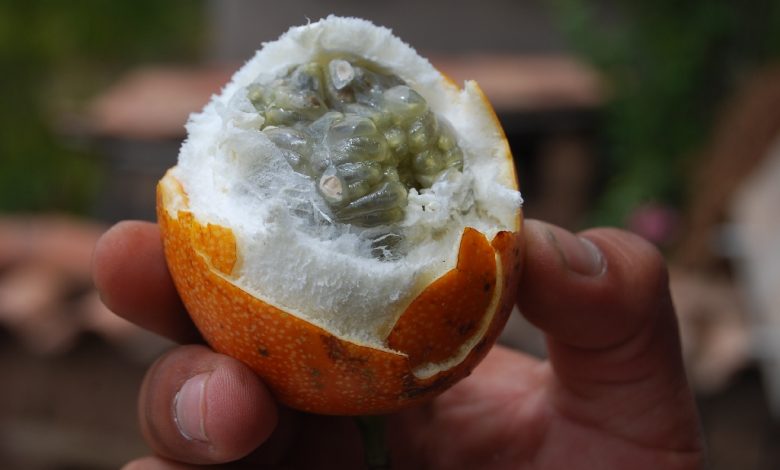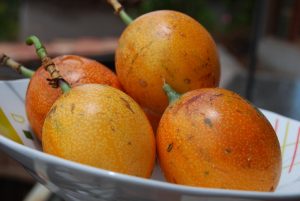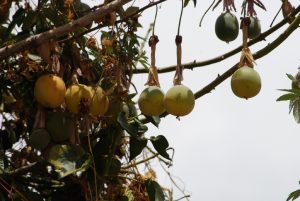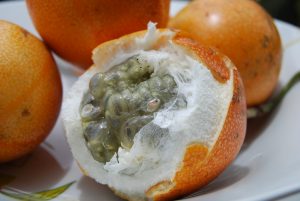Granadilla, an Unusual and Delicious Fruit from Cuzco

Cuzco is a land of many fruits. Not only does one find those that came with the Spanish and modernity, oranges, limes, apples and kiwi fruit, one also finds many that originated here and have delighted its people for thousands of years. Of these, none is more delightful than the granadilla, a fruit for which there is still no English.
A member of the passiflora family which includes the passion fruit and numerous others, granadilla is one of many that have not yet found names in the English speaking world. In Latin its full name is passiflora ligularis.
Despite its lack of name in English, which might cause one to think it is insignificant, it is actually very popular in Cuzco and else where in the Andes because it has the tang of passionfruit and yet is sweet.
Granadilla is a climbing vine and evolved in South America. It grows in the warmer lands of the coast and valleys, as well as the upper jungle. In Cuzco it is produced in what is called the ceja alta, the eyebrow where the highlands meet the jungle, such as in the area of Quillabamba or Echarate.

The fruit can be either yellow in color of orange, depending on wher it comes from. When broken open it has white flesh and a mass of gray seeds in a pulp. Sometimes the seeds are dark gray or even black. Nevertheless, it is the pulp that people find delicious and consume avidly.

When young the granadilla plant is green, but as it ages its leaves take on a light brown color. It is generally grown between 900 and 2700 meters (about 3000-9000 feet) above sea level. People sau that in the higher altitudes, above 2000 meters (6500 feet) the production is better and of higher quality.
Granadilla is very similar to the tintin of Cuzco, another passiflora plant that grows in gardens in the city of Cuzco and is related to the passionfruit. The leaves and stem are very similar. The oval form of the fruit is also similar, almost like that of a cooked egg,

The pulp inside the granadilla is sweet, and that is its biggest difference from the tintin and other passionfruits, due to the high content of sugars. It does not give much juice so, unlike the passionfruit or maracuyá, it is not used to make juice but is mostly consumed fresh. It is also beautifully perfumed.
While people do make some drinks from it, the granadilla is mostly the raw material for marmalades, jams, and concentrates.
Children particularly love the granadilla. Parents will send the fruit with them to school in their lunch box so the kids can enjoy them during their breaks in schools and kindergartens throughout the city. They are also much appreciated at home.
In the high times of rain you can find them in the markets of Cuzco. In the months of January, February, and March they will be especially abundant.





